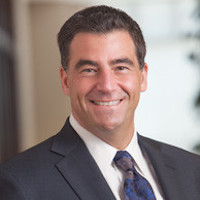
As the nation’s COVID-19 caseload and death count continue to rise, individuals and businesses are scrambling for Return-to-Work solutions. Moving cautiously forward against a highly infectious pandemic places employers and their employees in the worst of situations. Fortunately, the conundrum ‘how can we resume activities safely,’ can be partially addressed by emerging technology and human collaboration.
Our crash course in working remote has expanded our awareness of how technology can assist in optimizing our current work environment. Healthcare has witnessed a significant change in the acceptance of telehealth and Remote Patient Monitoring (RPM). The medical device industry has responded with new devices, platforms, and connectivity to create critical data from a distance while providing compassionate care outside the traditional clinical settings. Modern technology has supplied the building blocks to help meet this difficult challenge.
The responsibilities are clear. Employers and employees must take precautions to avoid infection and monitor themselves for early detection should infection occur. The public health basics are well known and must be followed. Correct masks, social distancing, and regular hand washing are now part of the daily routine at home and work.
Next, employees must establish baseline data sets of vital signs combined with symptom tracking. This information is gathered at home before arriving at the workplace. Employee screening at the workplace cannot stop this contagious virus from entering the workplace environment. On the spot temperature checks are often too late. A better solution is for employees to track their vital signs and temperature daily from home while completing a COVID-19 self-screening exam. This information is shared with the workplace or other sites, as appropriate. This practice increases personal awareness about the virus and transmits changes in signs or symptoms in advance of leaving the house. Early findings offer early warnings and allow smart decisions about ‘coming to work today.’
No approach is perfect as some COVID-19 infected employees may be asymptomatic during the incubation period. The Centers for Disease Control and Prevention has noted that up to 45% of transmission occurs between asymptomatic individuals who don’t know their infected, and uninfected people who aren’t aware of the viral transmission. This reality explains the necessity of public health guidelines. Still, telehealth and RPM can reduce the potential spread of infection by identifying employees who have clinically relevant changes from their baselines before they come to work.
Employers can access telehealth and RPM monitoring tools for employees, where devices measure and instantly upload vitals and answers to self-screening questions to a centralized HIPAA-compliant portal. A confidential access system permits the viewing of specific employee health data by qualified personnel. Most platforms have a threshold structure that issues alerts guided by the employer’s COVID-19 protocols, giving employees guidance on what needs to be done in order to return to work should they be suspected of infection.
With proper training and available guidance, adding these capabilities can become an essential asset in the employer-employee relationship. Telehealth and RPM technology deliver platforms that support HIPAA-compliance and a cost-effective solution to employees with on-demand access to doctors. A simple RPM solution can save lives and establish best practices resulting in reduced healthcare costs.
These unprecedented times call for innovative measures to keep our workers and work environments safe. Employers need to look after employees as well as employees looking after one another.
Peter Ianace has over 20 years of experience leading high growth teams at Morgan Stanley and Merrill Lynch, and is currently the chief operating officer at VitalTech, a virtual healthcare company.





